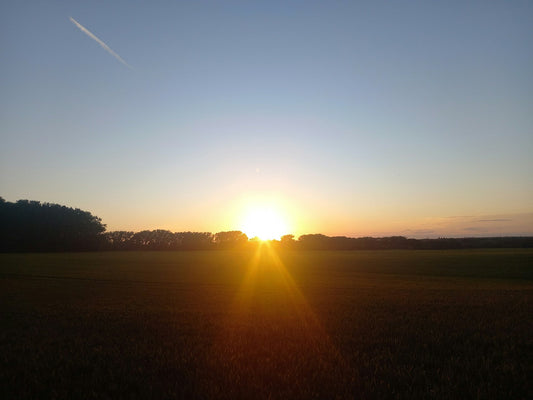
Origin Stories: Huehuetenango, Guatemala
Share
A rare thing happened to me while writing this article: the subject gave me butterflies and I effectively fell down a deep, hyper-caffeinated rabbit hole filled with stories of blood, sweat, and resilience. Because while Huehuetenango has an earned reputation for producing world-renowned Arabica coffee of heavenly flavors, it also has an (earned) reputation for having a tough time with farming it. I read, sipped, and fell further, wondering, what the heck do I do with this information? Not stepping foot there, I read like an untethered hungry creature. Where does this all lead? What comes next for Huehuetenango after three decades of civil war, famines, and coffee leaf rust? Surprisingly, the answer seems to be (for me) poetry and coffee farming.
Huehuetenango: High Altitudes, Hard Beans

High ridgelines and hard country: the birthplace of beans with true grit. Photo by kabemr on Pixabay.
Huehuetenango has a lot going for it when it comes to location. Containing the entire Sierra de los Cuchumatanes, a non-volcanic mountain range, the department (Guatemala is made up of 22 distinct departments, of which Huehuetenango is one) is highly mountainous and simultaneously filled with various rivers and riverways, some of which empty into the Gulf of Mexico. Frequently hit with warmer, drier winds, the coffee plains in Huehuetenango are usually protected from frost, making it well-suited for coffee growing. Very dependent on its coffee exportation, the region’s coffee is grown in rich, limestone soil at soaring altitudes from 4,900 ft up to 6,600 ft. This ensures the SHB (Strictly Hard Bean) EP (European Process) Grade, highly-sought after, plus high-quality beans that deliver those complex flavor profiles the world clambors for and enjoys. With the sweets comes the sours, as coffee leaf rust has been an ongoing problem, decimating most of the coffee plants and leading to calls for greater agrodiversity for farmers survival. Efforts are ongoing to replace dying coffee plants with newer more pest-resistant varieties as well as diversifying agricultural incomes with other plants, such as oyster mushrooms, macadamia nuts (of which the plants are also used to shade coffee plants), and corn among other ways. The plant is precious, but so are the farms and the families who farm them. Income from coffee farms is generated once a year, so when coffee is unpredictable, so too is the livelihood of farming communities.
From Bean to Cup: Wet Wash Process to Sun/Patio Dry

Coffee drying on a patio in the Guatemalan sunshine. Photo by AhmadHakroosh on Pixabay.
Bourbon, Cataui, and Caturra beans are processed very near to where they are grown, due to Huehetenango being very remote. Luckily, the region is dotted with many rivers, so a mill is never far from a farm. Processed using the wet wash process and the sun/patio dry method, meaning the coffee cherries are plucked from the plants, fruit and mucilage removed by fermentation or washing, then finally sun-dried on patios or on spreads of parchment. Later, they are moved to a dry mill nearby for sorting, grading, milling, and bagging. Eventually, we get to tasting it. And, oh, what taste. Universally acknowledged as complex, a very wide range of flavors can be detected. The aroma that stirs is chocolatey, caramelly, and rich. This echoes in the flavor profile, with chocolate hints along with traces of peach popping up here and there, red fruits, all together very sweet. A rich, full, smooth body with lightly vibrant acidity. The taster is left with a rich, winey aftertaste, and a feverish yearning for another sip. Feverish is a great descriptive for how I felt when writing this article, because I know I cannot do justice to the region, the farmers, or the coffee. Hopefully, after reading this article, you will research just how resilient the coffee farmers are today in Huehuetenango, Guatemala. This poem written by Guatemalan poet Humberto Ak’abal, first written and published in his native K’iche in 1999, translated to English by Michael Bazzett:
Memories
Now and then, I walk backwards.
It is my way of remembering.
If I only walked forward,
I could tell you about forgetting.
Explore Our Guatemala Origin Roast
Experience the unique character of coffees influenced by beans from this region:
- Backbreaker: Our light-medium roast. Strong and unique.
For more coffee tips and updates from True Grind, be sure to join our mailing list below!




